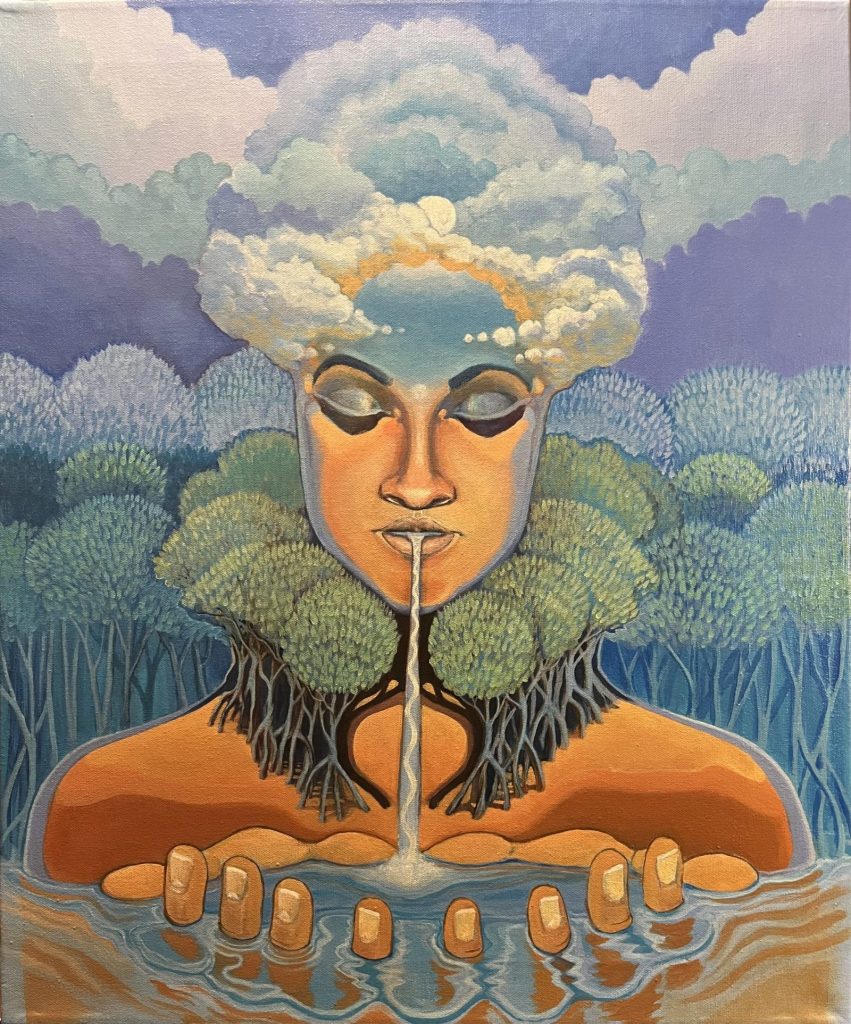
This story is part of the Arts and Culture Reporting Corps, sponsored by the Springfield Regional Arts Council.
The Springfield Regional Arts Council is partnering with Project HEAL, a program created by Missouri State University and Ozarks Technical Community College, for an exhibition titled “Recognize, Release and Transform,” opening April 7 at the Creamery Arts Center.
According to the Arts Council, “Recognize, Release and Transform” is an opportunity to celebrate survivors of sexual assault, domestic violence and stalking in the community. The project was supported by a grant awarded from the U.S. Department of Justice’s Office on Violence Against Women.
Project HEAL director Kunti Bentley said art therapy provides survivors with a chance to process their trauma if they’re not ready to speak about it.
“There aren’t always words,” Bentley said. “Speaking can be traumatic and can inhibit healing. Art is an outlet that is another option for someone’s healing path.”
Providing trauma-informed services at MSU, OTC
We think of healing as a way of coping with hurt, Bentley said, and sometimes it can take us a lifetime to process trauma. Through art therapy, survivors are able to work through trauma quietly and slowly.
Project HEAL provides trauma-informed services on the campuses of MSU and OTC for those who have been affected by interpersonal violence. Bailey Pyle, a licensed clinical provider for Burrell Behavioral Health’s Be Well Initiatives, said being trauma-informed involves looking at how interactions with others may impact their well-being.

“Being trauma-informed is being aware of impact, and what we say and do may interact with someone’s trauma at any time, with understanding that all of us have trauma at some time,” Pyle said. “Everyone we interact with has gone through something, so instead of asking, ‘What is wrong with you?’ we ask ‘What has happened to you?’”
Pyle said there are many different creative therapies that help create expression and movement, which talk therapy might not achieve.
“When we experience trauma, it happens in our whole body and not just our brains,” she said. “Talk therapy only goes so far because the body is still holding those experiences at the rudimentary level. We have a whole physical reaction, not just a reaction in our brains.”
Music therapy also available for survivors, those with disabilities
Drury University offers another way for survivors and those with disabilities to express themselves, through music therapy. According to Taylor Corcoran, a music therapist at the university, music can change the structures in your brain.
Corcoran, who works with rehab-focused groups with Parkinson's disease, said there is a lot of research that supports the idea that elements of music help our brain cells communicate synchronously.

“If there’s a part of the brain that’s damaged or wired incorrectly for whatever reason, music can neurologically help those brain cells operate more optimally,” she said.
Corcoran said there is also research that suggests music can help with the brain’s neuroplasticity, where it ignites all parts of the brain.
Pyle said through expressive therapies like art and music therapy, people are able to work through the physical aspects of their traumas rather than just the memory of that trauma.
Workshops planned for the summer
Alongside the Project HEAL exhibition, the Creamery Arts Center, located at 411 N. Sherman Parkway, will be hosting workshops this summer for those who would like to create a piece. Bentley said there will be trauma-informed instructors available to help those who attend.
“We’re excited to provide one-on-one support,” she said. “When taking a community approach, it’s important to be intentionally inclusive.”
To learn more, visit the Project HEAL website.

